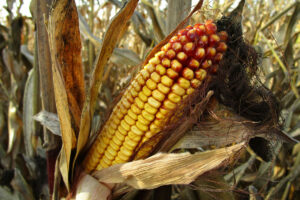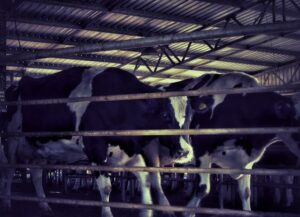Maria Villagrasa & Fernando Diaz
Animal production depends in large part on the digestibility of nutrients contained in the feed, and the extent to which these nutrients can be absorbed and metabolized. It is for this reason that in recent years enzymes have been used as a standard additive in the animal feed industry.
The use of enzymes in animal feeds allows for the best utilization of feed constituents and even the use of lower quality ingredients. This results in less spending in feed purchases and an improvement in animal health and animal production indicators.
Most enzymes used in food and food processing are of microbial origin. These protein compounds are usually produced by bacteria (Bacillus), fungi (Aspergillus oryzae and A. niger) and yeasts.
Fungus species in the genus Aspergillus produce a wide variety of polysaccharide enzymes (cellulase, hemicellulase) that could influence the degradation of plant cell walls. Similarly, a relatively high content of A. oryzae fibrolytic enzymes may favor the degradation of fiber in the rumen. However, recent studies on this fungus have shown inconsistent results.
A recent experiment (Sucu E. et al., 2019) was designed to determine the effects on productive performance and health of feeding a high dose of Aspergillus oryzae to dairy cows in transition.
A total of 33 Holstein cows (22 multiparous and 11 primiparous) were distributed in two dietary group treatments, from 21 days before the scheduled calving to 60 days in milk. One group (control) received pre- and postpartum basal diets based mainly on alfalfa hay and steam-rolled corn, the other group (treatment) the same basal diets plus 15 g/day of A. oryzae.
Supplementation with A. oryzae increased total milk production
There were no effects of treatment regardless of parity on dry matter intake (DMI) prior to (18.3 kg/day) or after calving (39.7 kg/day).
Maximum body weight loss (51.9 kg) did not differ between treatments, but the number of weeks with the lowest body weights tended to be less in animals fed A. oryzae compared to controls (5.0 vs 6.2 weeks).
Supplementation with A. oryzae during the transition period increased total milk production (37.7 vs 34.6 kg/d). Maximum production was achieved earlier in cows supplemented with A. oryzae (3.0 vs 5-6 weeks) with a daily milk production difference of more than 4.5 kg during weeks 3 and 4 of lactation.
There were no general effects of treatment on milk composition; in animals supplemented with A. oryzae however, there was a weak tendency for milk fat and lactose content to increase and decrease, respectively. In a similar experiment in which A. oryzae was also used as an additive but where the diet consisted of corn silage and ground corn, the authors found that milk production declined, but milk fat increased.
In addition, treatment did not affect plasma glucose concentrations (66.05 mg/dL), while plasma levels of non-esterified fatty acids (NEFA) tended to be reduced with A. oryzae supplementation. The largest improvement occurred in weeks 1 and 2; animals fed A. oryzae showed a 19% and 17% reduction in NEFA concentrations, respectively.
Dairy cattle are prone to metabolic disorders during the transition period which reduces their productive efficiency. However, no differences were observed between groups on cow health or reproductive performance.
The results indicate that the addition of A. oryzae improved milk production during the transition period.
The plasma concentration of NEFA decreased during the postpartum period in response to A. oryzae supplementation suggesting that feeding with A. oryzae may minimize the duration of the negative energy balance at the start of the lactation.
These results suggest that the effectiveness of A. oryzae is variable, and that while it has the potential to improve milk production efficiency, the amounts and type of forage used can influence the response.
Reference
Ekin Sucu, Chel Moore, Matthew J. VanBaale, Howard Jensen, Maria V. Sanz-Fernandez, and Lance H. Baumgard. Effects of feeding Aspergillus oryzae fermentation product to transition Holstein cows on performance and health. Can. J. Anim. Sci. 99: 237–243 (2019)
© 2020 Dairy Knowledge Center. All Rights Reserved.











